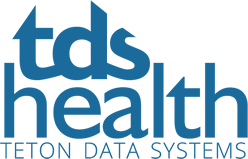Antisepsis, Disinfection, and Sterilization: Types, Action, and Resistance

Description
The theory and practice of controlling and eliminating microorganisms
Antisepsis, Disinfection, and Sterilization: Types, Action, and Resistance, by Gerald E. McDonnell, is a detailed and accessible presentation of the current methods of microbial control. Each major category, such as physical disinfection methods, is given a chapter, in which theory, spectrum of activity, advantages, disadvantages, and modes of action of the methods are thoroughly and clearly presented. Sufficient background on the life cycles and general anatomy of microorganisms is provided so that the reader who is new to microbiology will better appreciate how physical and chemical biocides work their magic on microbes. Other topics in the book include:
- • Evaluating the efficacy of chemical antiseptics and disinfectants, and of physical methods of microbial control and sterilization.
- • Understanding how to choose the proper biocidal product and process for specific applications.
- • Classic physical and chemical disinfection methods, such as heat, cold, non-ionizing radiation, acids, oxidizing agents, and metals.
- • Newer chemical disinfectants, including, isothiazolones, micro-and nano-particles, and bacteriophages as control agents.
- • Antisepsis of skin and wounds and the biocides that can be used as antiseptics.
- • Classic methods of physical sterilization, such as, moist heat and dry heat sterilization, ionizing radiation, and filtration, along with newer methods, including, the use of plasma or pulsed light.
- • Chemical sterilization methods that use ethylene oxide, formaldehyde, or a variety of other oxidizing agents.
- • A detailed look at the modes of action of biocides in controlling microbial growth and disrupting microbial physiology.
- • Mechanisms that microorganisms use to resist the effects of biocides.
The second edition of Antisepsis, Disinfection, and Sterilization: Types, Action, and Resistance is well suited as a textbook and is outstanding as a reference book for facilities managers and application engineers in manufacturing plants, hospitals, and food production facilities. It is also essential for public health officials, healthcare professionals, and infection control practitioners.
Quotes, Reviews or Testimonials
"Students and healthcare professionals of infection control, microbiology, and public health will be able to use this as a reliable reference for the various chemical and physical antisepsis, disinfection, and sterilization methods. The book will provide a greater understanding and appreciation of these technologies used in contamination and infection prevention. In return, this will help ensure their long-term safe and effective use."
-- Robert Penn, MD (Nebraska Methodist Hospital) Doody's Review - previous edition
Audience
It is targeted at healthcare professionals involved in infection control and prevention, application engineers, facilities managers, microbiologists, chemists, and students. The author is an acknowledged expert working in the field.

